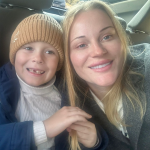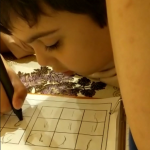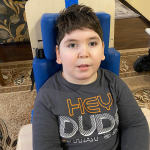Food Selectivity in Autism: Not a Quirk, but a Symptom
Most parents have encountered situations where their child has favorite foods, leading to a less varied diet. Children often leave food unfinished or refuse to try new foods, and at a young age, this behavior is completely normal.
However, autistic children can be extremely selective about their food. They may prefer foods with specific textures—such as crunchy or soft—making it especially difficult to introduce new dishes. Changes in mealtime routines can even lead to meltdowns. Despite these challenges, it is possible to transition a child to a healthier diet using several strategies.
Strategies for Transitioning to a Healthy Diet
- Many children need to try a new food more than a dozen times before getting used to it. Parents should understand that their child is exploring new food sources. If a child consistently rejects a food after several attempts, they may simply not like it. Forcing them to eat or punishing them for refusing can lead to a strong aversion to food. Instead, trying a different dish may be a better approach. The key is to ensure that mealtime does not become a source of conflict.
- Autistic children are often reluctant to try new things. Help them by encouraging them to touch and smell new foods. They may follow your lead, increasing the likelihood that they will eventually taste the food.
- Many autistic children are highly sensitive to the appearance and texture of food. Making food visually appealing by arranging it in fun, colorful shapes can be helpful. If a child dislikes raw tomatoes, for example, they can be finely chopped and mixed into other foods they tolerate.
- Involving children in meal preparation or taking them grocery shopping can encourage them to explore new foods. Older children might develop an interest in cooking, so using simple cookbooks can help them pick new recipes to try.
- Keeping a food diary can be beneficial. Recording what the child eats during each meal and snack can help track progress and identify challenges.
- As the child’s diet improves, positive reinforcement can help. Rewarding them with their favorite treats—such as desserts or other sweets—should be done in moderation and as part of regular meals.
Addressing Food Selectivity Through Stem Cell Therapy
Picky eating is a normal developmental stage for most children, not just autistic ones. However, ensuring that an autistic child understands the benefits of a healthy diet can be particularly challenging. When dietary difficulties persist, stem cell therapy can offer an effective solution.
One of the key advantages of stem cell therapy is its comprehensive approach—it addresses both autism symptoms and the underlying disorder itself, which is often the root cause of behavioral, dietary, and other challenges.
Another major benefit is its natural mechanism. The therapy involves transplanting the patient’s own stem cells, which repair affected areas of the brain by replacing damaged cells with healthy ones. This leads to a significant reduction or complete elimination of symptoms. The results are long-lasting, often permanent, and enhance the effectiveness of other corrective interventions.
Given its high effectiveness and promising future, stem cell therapy may become the primary treatment for autism. Today, it is practiced by some of the world’s leading medical centers, including the Mardaleishvili Medical Center. This facility is equipped with cutting-edge technology and staffed by experienced specialists who have successfully used stem cell transplants to treat autism spectrum disorders. Additionally, medical care in Georgia is more affordable compared to other countries, and the center’s staff provides assistance with travel arrangements, accommodations, and other logistics.
Begin the Journey to a Healthy Diet with Stem Cell Therapy!
Autism Treatment Center Videos
Autism treatment with own stem cells
Cord blood association congress
International Quality Crown
Autism Treatment Reviews
Autism treatment with own stem cells
The story of Alessandro (6 years old)
Autism Patient Testimonial - Stem Cell Treatment
Clients Testimonials

Feedback from Igor, David’s father (12 years old) Read More

Feedback from Olga, Fedya’s mother Read More

Feedback from Natalia, Radomir’s mother (15 years old) Read More

Feedback from Esther, Samuel’s mother (8 years old) Read More

Feedback from Abibe, Selim’s mother (7 years old) Read More












